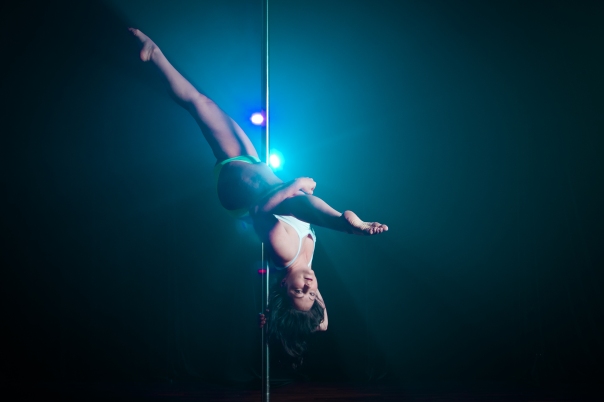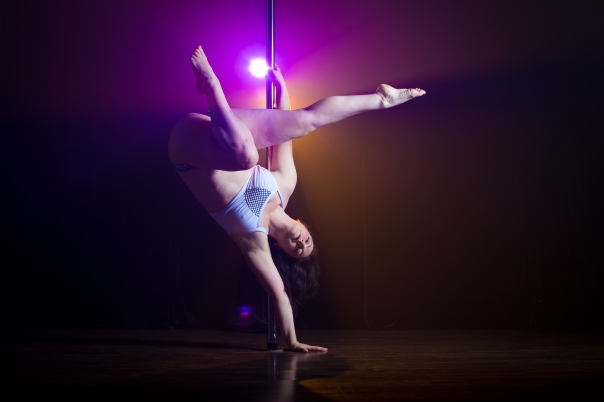Blog Archives
Don’t Steal Shit: Let’s Talk About Choreo Credit
At some point, every dancer who discovers pole goes looking for inspiration. There are a lot of ways to find it: maybe it’s your teacher, maybe it’s a showcase or competition you go see, or maybe it’s a new class you try out, but I’d venture to bet that the most common means of finding inspiration is now online. Platforms like Instagram, YouTube, and Facebook allow us to find the work of other polers from across the globe.
Instagram in particular has been huge for polers. Every week, it seems like there is a new move popping up to try. With the platform’s ability to send videos to friends (and to yourself), and its new “save” feature, it’s the perfect means to save ideas to try in your next jam session. There’s also the magic of hashtags, which – thanks to an idea from Michelle Shimmy – can now be easily customized to tag specific pole moves (#pdinsertyourmovehere).
But with all of these opportunities to be inspired by the work of other polers, there is also an opportunity to ruffle feathers: taking credit for something you didn’t originate.
The first example of this with the naming of moves. I hate to break it to folks, but the chances that you have discovered a new move are pretty low. Unless you are a magical unicorn poler with skills in the top 1% of our industry, it’s fairly likely that somebody, somewhere, has probably done that thing you’re doing (and – frankly – I’ve seen famous polers co-opt moves that lesser-known polers were working on, so nobody is immune from this egocentric excitement). Without standardized names for every move, and due to the innovation happening in our industry, it’s understandable that some moves will have two, three, even five names. And that makes it tough to know if something is new, or if it’s something you just haven’t seen or heard of yet. But, my loves, remember to be humble and recognize that it’s okay that you aren’t the first person to do something. The fact that you found a cool shape or awesome move and can try it – and nail it – makes you a bad ass in your own right.

A move I spotted on Tiffany Jane, which I have been calling Jade Bird, but which may have another name! Photo by Alloy Images 2017
The second example is outright choreo theft. While this wonderful internet age has brought us the ability to see inspiration in the work of others we may never meet in person, it also means that those polers putting their work online have become vulnerable to having their work stolen. Yes, I said stolen.
These dancers work hard to create art and share it with the world. Choreography is an expression of that individual, something that they pour their heart and soul into, and to see it stolen can be a brutal and emotional experience. To rob these artists is cruel and selfish; it’s also massively lazy and rude.
Choreography theft can take place in a classroom – attending a class and teaching someone’s curriculum elsewhere, without crediting them for their creation – but most often, it happens through online videos. It’s very easy to watch, re-watch, and study clips online, to teach yourself the routines of others. Fundamentally, there’s nothing wrong with wanting to learn from the work of others, or even to emulate it, but if you are going to copy a routine, you must give credit where credit is due.
Always, always give mention to the person who inspired or created the original choreography. Tag them; give them a shout-out; make sure it’s clear that you are acknowledging their hard work and how it inspired you. Do this in classes, or when you post your videos online. It’s important, and it makes us better as an industry.

I know this move as B-Girl, and I know it as a Natasha Wang creation, but I could be wrong! Photo by Alloy Images 2017
And, when it comes to creating routines? Don’t copy. Polers who have competed or performed often put dozens of hours into a piece. They have given blood, sweat, and tears (often literally) to bring their work to life. Stealing their choreography is a violation. Just because a routine is available online does not make it acceptable for you to copy.
But, what if it’s just one part of a routine? Perhaps you like a sequence you saw, or a combo somebody made, and you want to incorporate it into your piece. Is a sequence or combo considered the same as choreography? It’s a difficult question to answer – my personal thought is no for a combo, yes for a full sequence – but your best bet is to always give credit where credit is due. A simple, “inspired by” when you post the performance video is a great idea!
If you do find yourself loving a full sequence you’ve seen in another routine, and you want to incorporate it into your own piece, you better find a way to really make it YOURS; it will make you a stronger dancer if you do you, instead of doing a knock off of last year’s winner of such-and-such (because, believe me, everyone will see it and compare it to the original…which you do not want). And, remember: credit your inspiration!

